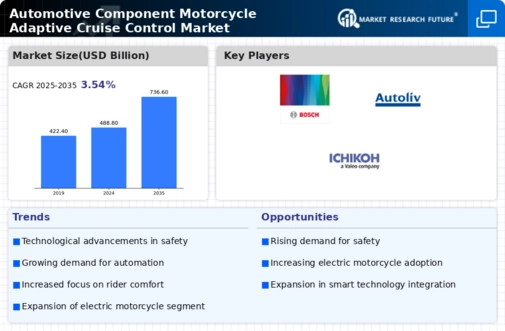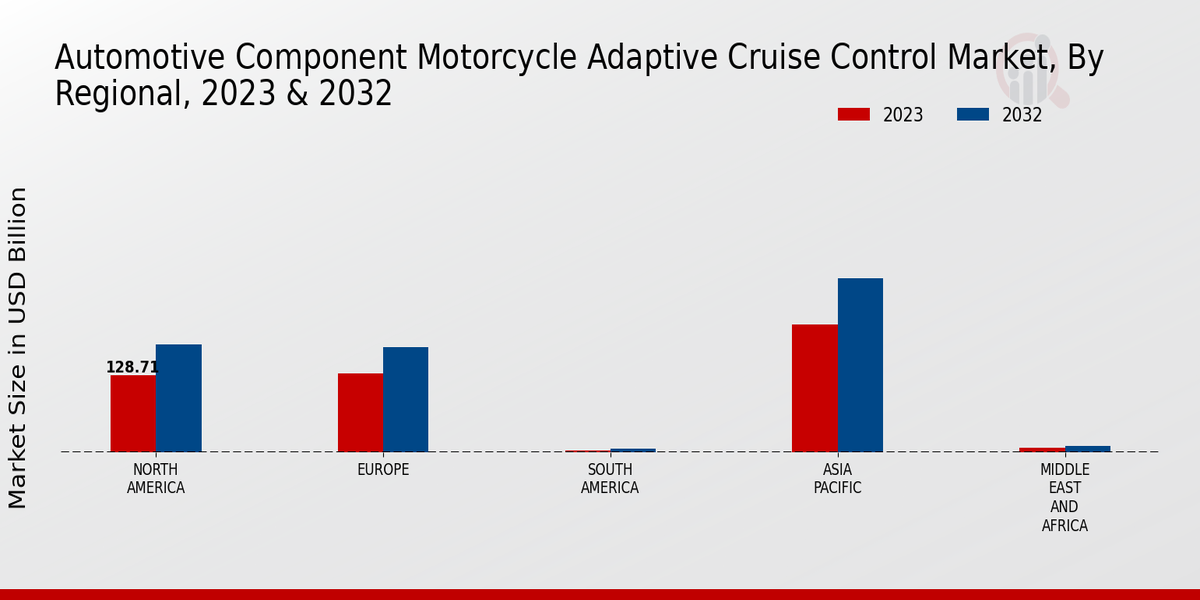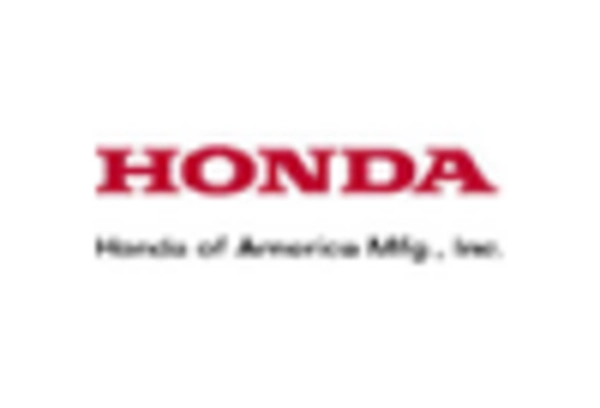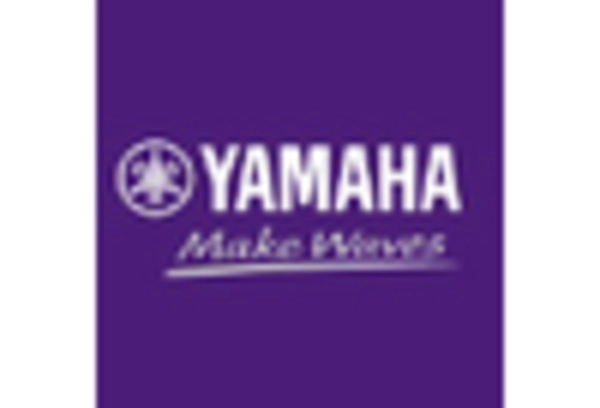The Automotive Component Motorcycle Adaptive Cruise Control Market is experiencing a substantial expansion driven by technological advancements, increasing consumer demand for safety features, and rising awareness regarding road safety. The landscape reveals intense competition among key players, each striving to leverage innovation to enhance their product offerings and capture greater market share.
This dynamic environment is characterized by various strategies, including collaborations, mergers, and new product developments aimed at meeting the diversified needs of consumers globally. The market's competitive insights indicate a shift toward enhancing functionality within adaptive cruise control systems, which not only improves rider comfort but also minimizes the risk of accidents.
Key players are focusing on integrating advanced technologies like radar and camera systems to enhance the reliability and effectiveness of these systems. The ongoing development and investment in smart mobility solutions are expected to further augment the growth trajectory of the Automotive Component Motorcycle Adaptive Cruise Control Market, fostering a robust competitive landscape where agility and innovation are crucial for sustained success.
A leading company in the Automotive Component Motorcycle Adaptive Cruise Control Market is Bosch, renowned for its commitment to innovation and quality. Bosch has established itself as a front-runner in developing sophisticated adaptive cruise control systems specifically designed for motorcycles.
The company's extensive research and development efforts play a critical role in enhancing the capabilities of its products, ensuring that they meet stringent regulatory standards and consumer expectations. With a focus on integrating connectivity features and other advanced technologies, Bosch is not only enhancing rider safety but also optimizing the overall riding experience.
The company's presence and strategic partnerships with motorcycle manufacturers facilitate the rapid dissemination of its solutions across various markets. This proactive approach to Automotive Component Motorcycle Adaptive Cruise Control Market development places Bosch at the forefront, driving competitive advantages and positioning it as a preferred choice among consumers and manufacturers alike.
Another significant player making waves in the Automotive Component Motorcycle Adaptive Cruise Control Market is Continental. This company is recognized for its innovative technologies that enhance vehicle safety and performance, with a specific emphasis on motorcycle applications.
Continental's adaptive cruise control systems are designed to adapt seamlessly to varying road conditions and traffic situations, providing riders with a safer and more enjoyable experience. The company's commitment to sustainability and precision engineering complements its offerings, appealing to environmentally conscious consumers. Continental's investment in cutting-edge research enables it to refine its product features, ensuring it remains at the cutting edge of technology while maintaining regulatory compliance.
By prioritizing consumer safety and experience, Continental has solidified its reputation as a formidable contender in the Automotive Component Motorcycle Adaptive Cruise Control Market competitive landscape, continuously striving to outpace rivals through ongoing innovation and customer engagement.


















Leave a Comment